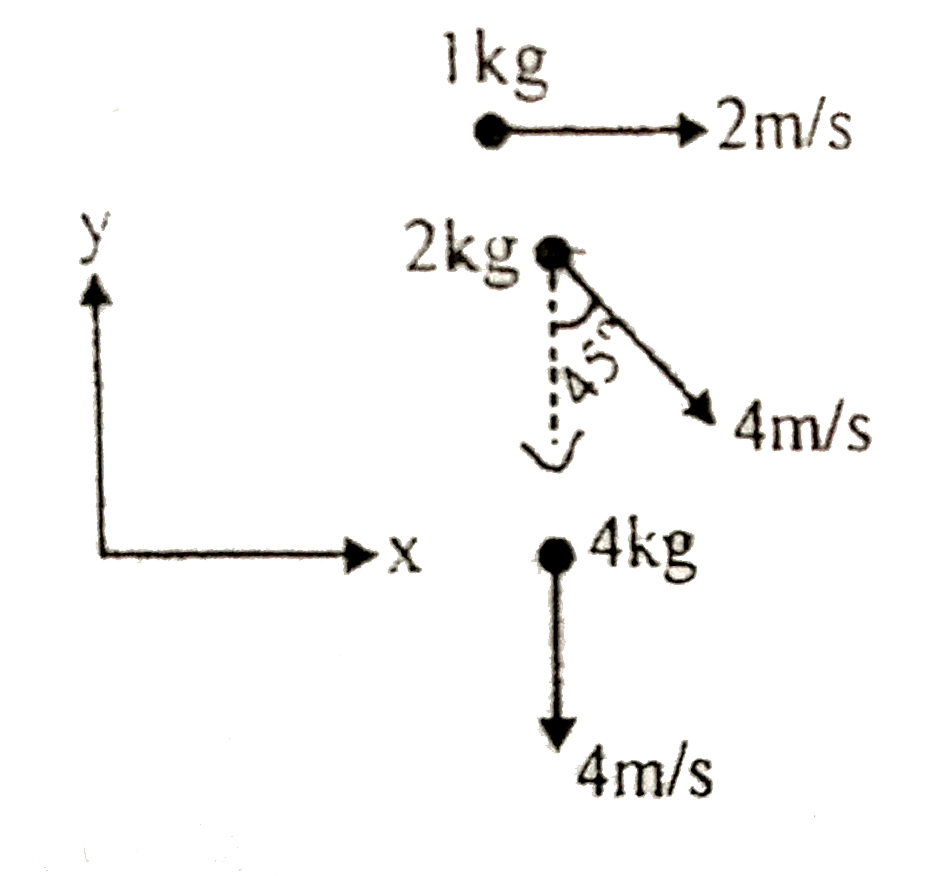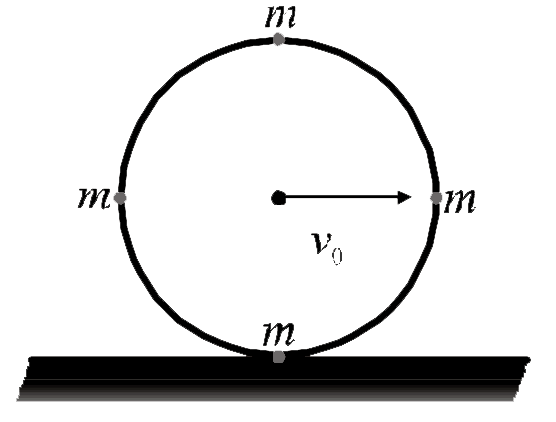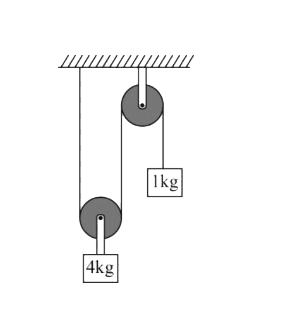Mass m=m0√1−v2c2 as a function of a velocity is shown in the graph. m0 is the rest mass of the system. The kinetic energy of system is given as K=mc2−mcC2
Choose correct option (s)

If a system is moving with speed v=0.5c, the mass of system is increased by 15.5%.
Electrons in Cornell university synchrotron reach a velocity of v=0.8c. The mass of these electrons are approximately (53) time the set mass of electron
The Beatron a proton accelerator generates the accelerated protons with kinetic energy 10−9 Joules. The mass of accelerated protons is 8.68 time the acutal mass of proton aproximately (mp0=1.67×10−27kg)
If the kinetic energy of particle is equal to its rest mass energy then speed of particle is 0.75c approximately.
The correct Answer is:A, B
(C) MM0=Mc2M0c2=K+M0c2M0c2=1+10−91.67×10−27×9×1020≈7.68
(D) Mc2=M0c2+K+2m0c2
⇒M=2M0
⇒M0√1−v2c2=2M0
⇒1=4−4v2c2
⇒v2=3c24⇒v=√32c=0.866c
Topper's Solved these Questions
- BOOK - FIITJEECHAPTER - TEST PAPERSEXERCISE - PHYSICS747videos
TEST PAPERS
- BOOK - FIITJEECHAPTER - SIMPLE HARMONIC MOTIONEXERCISE - Assignment Problems (Objective) (Level-II)20videos
SIMPLE HARMONIC MOTION
- BOOK - FIITJEECHAPTER - WORK, ENERGY AND POWER EXERCISE - COMPREHENSIONS ( Comprehension-II)5videos
WORK, ENERGY AND POWER
Similar Questions
In relativistic mechanics m=m0√(1−v2c2) the equivalent relation in electricity for electric charge is
View SolutionTwo particles having masses m1andm2 are moving with velocities →V1and→V2 respectively. →V0 is velocity of centre of mass of the system.
(a) Prove that the kinetic energy of the system in a reference frame attached to the centre of mass of the system is KEcm=12μV2rel. Where μ=m1m2m1+m2 and Vrel is the relative speed of the two particles.
(b) Prove that the kinetic energy of the system in ground frame is given by
KE=KEcm+12(m1+m2)V20
(c) If the two particles collide head on find the minimum kinetic energy that the system has during collision.View Solution
Knowledge Check
- Question 1 - Select One
The velocity (in m/s) of centre of mass of the system as shown in the figure is :
 A2[1+4√2]ˆi+8[1√2+2]ˆj7B2[1+4√2]ˆi+8[1√2−2]ˆj7C2[1+4√2]ˆi−8[1√2+2]ˆj7D8[1√2−2]ˆi+2[1+4√2ˆj]7
A2[1+4√2]ˆi+8[1√2+2]ˆj7B2[1+4√2]ˆi+8[1√2−2]ˆj7C2[1+4√2]ˆi−8[1√2+2]ˆj7D8[1√2−2]ˆi+2[1+4√2ˆj]7 - Question 2 - Select One
A particle of mass 2m moving with velocity v strikes a stationary particle of mass 3m and sticks to it . The speed of the system will be
A0.8vB0.2vC0.6vD0.4v - Question 3 - Select One
A body of mass m moving with velocity v makes a head-on collision with another body of mass 2 m which is initially at rest. The loss of kinetic energy of the colliding body (mass m ) is
A12 of its intial kinetic energyB19 of its initial kinetic energyC89 of its initial kinetic energyD14 of its initial kinetic energy
A ring of mass m and radius R has four particles each of mass m attached to the ring as shown in figure. The centre of ring has a speed v0. The kinetic energy of the system is
 View Solution
View SolutionA particle of mass 2m moving with velocity v strikes a stationary particle of mass 3m and sticks to it. The speed of the system will be
View SolutionIn the system shown in the adjoining figure, the acceleration of the 1 kg mass is m/s2. (take g=10m/s2)
 View Solution
View SolutionA body of mass m moving with velocity v makes a head-on collision with another body of mass 2 m which is initially at rest. The loss of kinetic energy of the colliding body (mass m ) is
View SolutionA particle of mass m moving with velocity v strikes a stationary particle of mass 2m and sticks to it. The speed of the system will be.
View Solution

